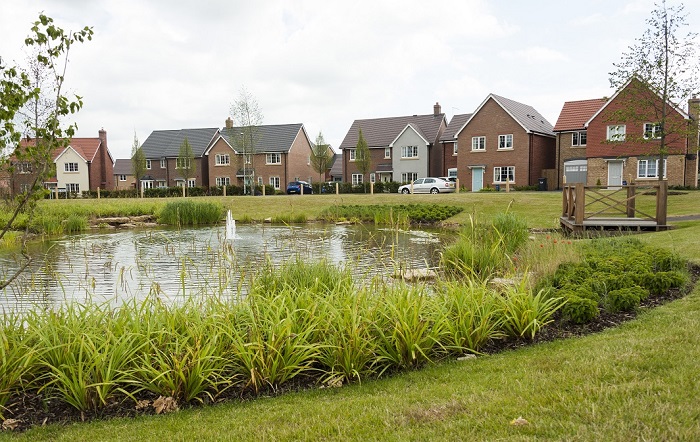Village definition
A village is a human settlement of a small size which is typically situated in a rural location. Broadly, a village tends to have a population of between 500 and 2,500, making it larger than a hamlet but smaller than a town. Historically, in the UK, villages tended to be classified as such when a church was built.
During the Industrial Revolution, people were drawn in greater numbers away from villages to towns and cities, or villages grew into towns themselves.
Traditionally, many villages developed as a form of community that was based around some form of amenity or trade, such as subsistence farming or fishing. In some cases, a village would be a form of ‘linear settlement’, i.e. one that was built in a line such as a along a railway line, road, river or coastline. Alternatively, they could be clustered around a central point, such as a church, market, or public space such as a ‘village green’. This is referred to as a ‘nucleated settlement’.
Planned villages are those which do not develop naturally around a central point or linear settlement but are instead created by urban planners.
In January 2017, the government announced the development of the 14 garden villages across England, with the potential to deliver more than 48,000 new homes. These may range in size from 1,500 to 10,000 homes, and will be distinct new places with their own community facilities, rather than extensions of existing urban areas. For more information, see Garden village.
The term ‘village’ can also be used to refer to particular neighbourhoods within a larger area, such as Greenwich Village in Manhattan, Chorlton Village in Greater Manchester, and the Olympic Village in London. These are often seen as being desirable areas and are sometimes part of a process of gentrification.
NB The GEN Glossary, published by the Global Ecovillage Network, [accessed 24/20/2022], defines a village as: ‘A clustered human settlement, larger than a hamlet but smaller than a town, with a population ranging from a few tens to a few thousand. Though often located in rural areas, the term urban village is also applied to urban neighborhoods.’
[edit] Related articles on Designing Buildings
Featured articles and news
RTPI leader to become new CIOB Chief Executive Officer
Dr Victoria Hills MRTPI, FICE to take over after Caroline Gumble’s departure.
Social and affordable housing, a long term plan for delivery
The “Delivering a Decade of Renewal for Social and Affordable Housing” strategy sets out future path.
A change to adoptive architecture
Effects of global weather warming on architectural detailing, material choice and human interaction.
The proposed publicly owned and backed subsidiary of Homes England, to facilitate new homes.
How big is the problem and what can we do to mitigate the effects?
Overheating guidance and tools for building designers
A number of cool guides to help with the heat.
The UK's Modern Industrial Strategy: A 10 year plan
Previous consultation criticism, current key elements and general support with some persisting reservations.
Building Safety Regulator reforms
New roles, new staff and a new fast track service pave the way for a single construction regulator.
Architectural Technologist CPDs and Communications
CIAT CPD… and how you can do it!
Cooling centres and cool spaces
Managing extreme heat in cities by directing the public to places for heat stress relief and water sources.
Winter gardens: A brief history and warm variations
Extending the season with glass in different forms and terms.
Restoring Great Yarmouth's Winter Gardens
Transforming one of the least sustainable constructions imaginable.
Construction Skills Mission Board launch sector drive
Newly formed government and industry collaboration set strategy for recruiting an additional 100,000 construction workers a year.
New Architects Code comes into effect in September 2025
ARB Architects Code of Conduct and Practice available with ongoing consultation regarding guidance.
Welsh Skills Body (Medr) launches ambitious plan
The new skills body brings together funding and regulation of tertiary education and research for the devolved nation.
Paul Gandy FCIOB announced as next CIOB President
Former Tilbury Douglas CEO takes helm.
UK Infrastructure: A 10 Year Strategy. In brief with reactions
With the National Infrastructure and Service Transformation Authority (NISTA).























